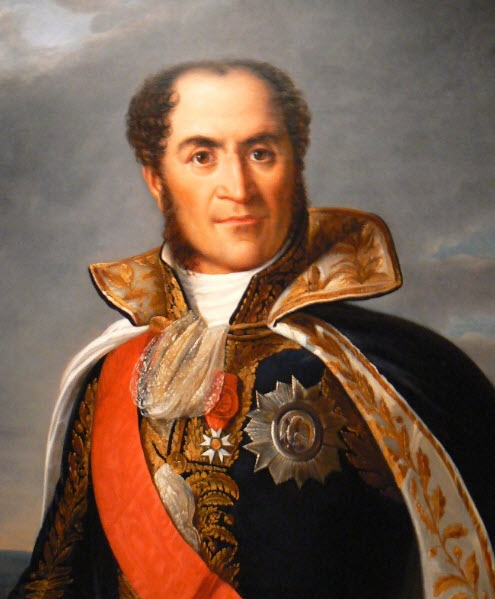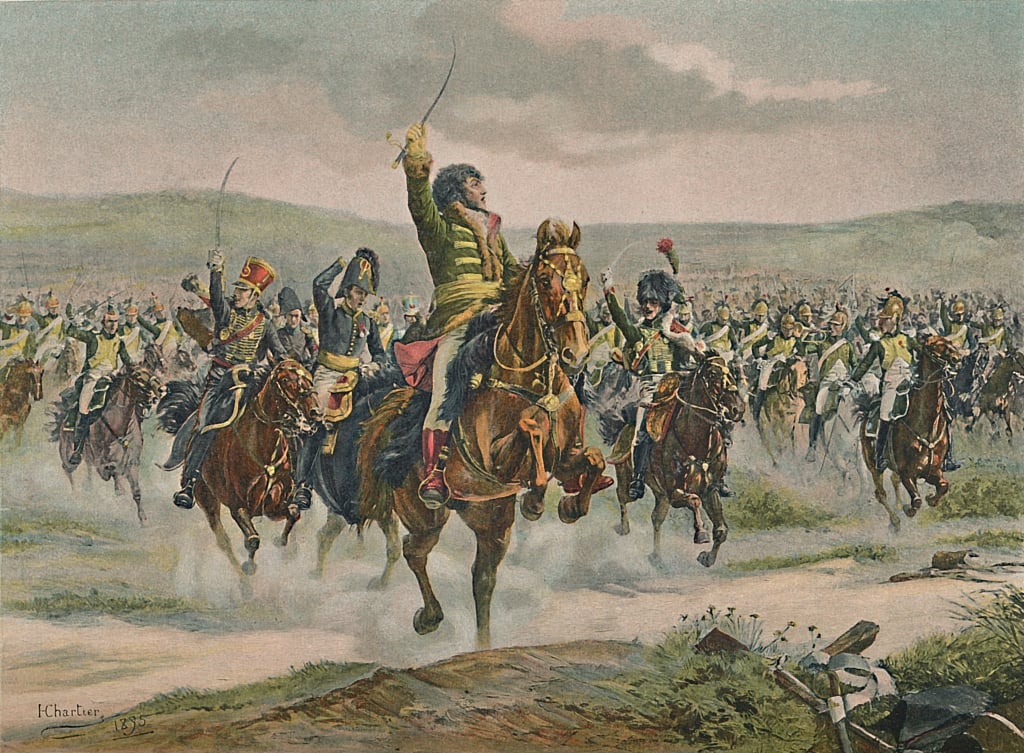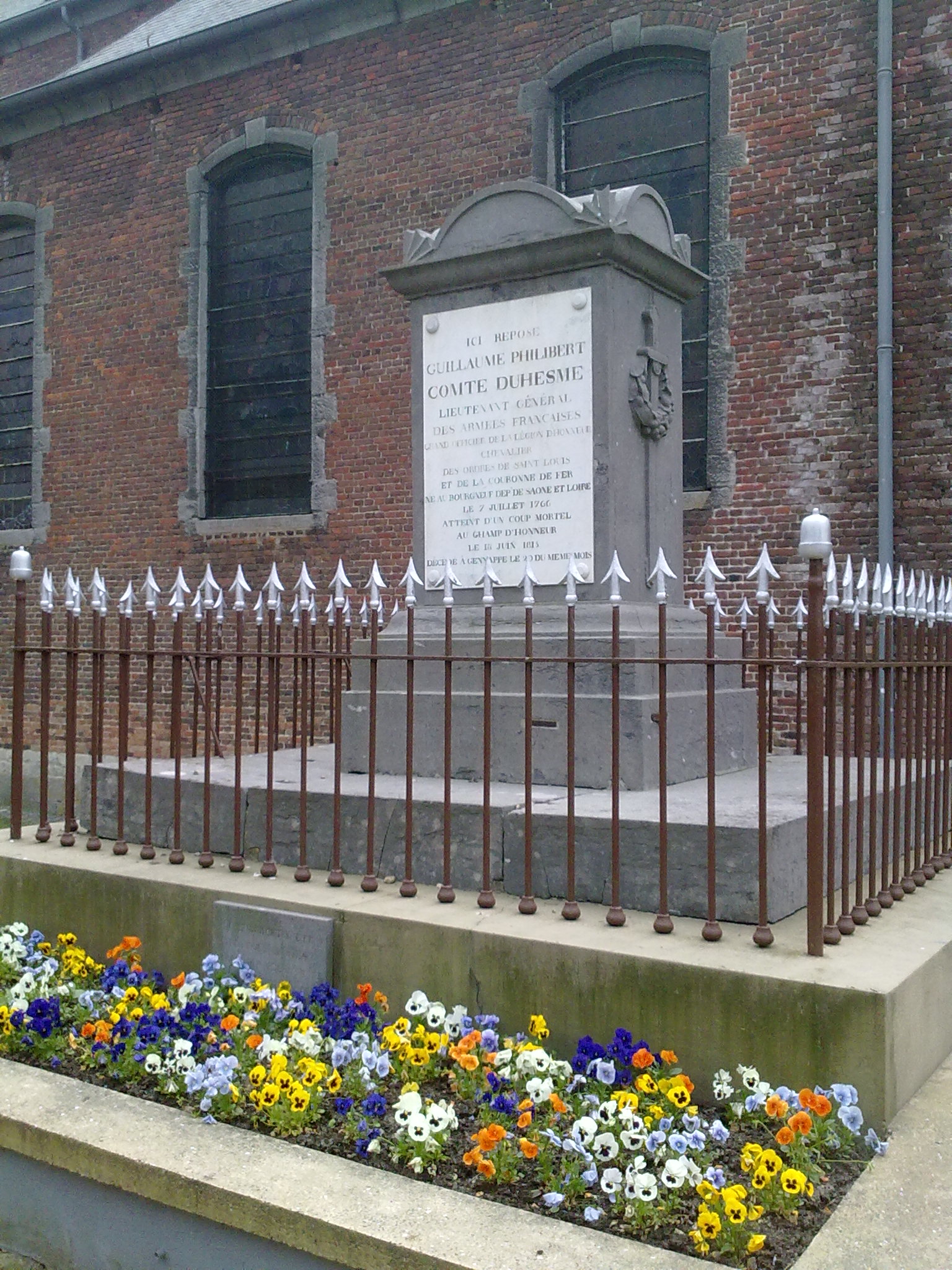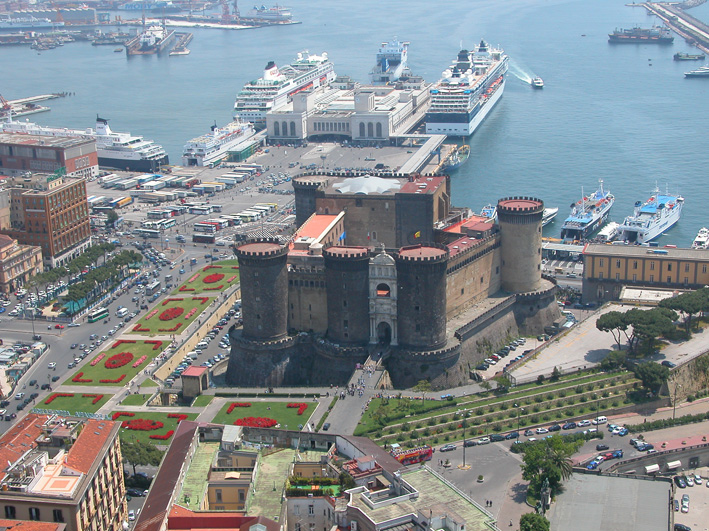|
Ettore Carafa
Ettore Carafa d'Andria, the Count of Ruvo (10 August 1767, in Andria – 4 September 1799, in Naples) was an Italian soldier and republican patriot, executed after the fall of the Parthenopean Republic. His courage, idealism, and resolute optimism created in Ettore an image of the Italian martyr for following generations involved in the struggle for more democratic structures and an Italian nation. Biography His father, Riccardo Carafa, was the Duke of Andria; his mother, Margherita Pignatelli, was the sister of the Vicar General, Francesco Pignatelli. Ettore had three brothers: Francesco, Fabrizio, and Carlo. He had three sisters: Maria Giuseppa married to the Duke of Sangro, lieutenant general to the King; Maria Luisa married to Baldassarre Caracciolo, Duke of Casteldisangro; and another married to the Duke of Altemps. The house of Carafa had long been a prestigious noble family, which included an ancestor as Pope Paul IV. The Duke and Duchess had ''offices in the Court and we ... [...More Info...] [...Related Items...] OR: [Wikipedia] [Google] [Baidu] |
Cisalpine Republic
The Cisalpine Republic ( it, Repubblica Cisalpina) was a sister republic of France in Northern Italy that existed from 1797 to 1799, with a second version until 1802. Creation After the Battle of Lodi in May 1796, Napoleon Bonaparte organized two states: one to the south of the Po, the Cispadane Republic, and one to the north, the Transpadane Republic. On 19 May 1797, Napoleon transferred the territories of the former Duchy of Modena to Transpadania and, on 12 Messidor (29 June), he decreed the birth of the Cisalpine Republic, creating a Directory for the republic and appointing its ministers. France published the constitution of the new republic on 20 Messidor (7 July), establishing the division of the territory into eleven departments: Adda ( Lodi), Alpi Apuane (Massa), Crostolo ( Reggio), Lario (Como), Montagna ( Lecco), Olona (Milan), Panaro ( Modena), Po ( Cremona), Serio ( Bergamo), Ticino ( Pavia), and Verbano ( Varese). The rest of Cispadania was merged into the Ci ... [...More Info...] [...Related Items...] OR: [Wikipedia] [Google] [Baidu] |
Joachim Murat
Joachim Murat ( , also , ; it, Gioacchino Murati; 25 March 1767 – 13 October 1815) was a French military commander and statesman who served during the French Revolutionary Wars and Napoleonic Wars. Under the French Empire he received the military titles of Marshal of the Empire and Admiral of France. He was the 1st Prince Murat, Grand Duke of Berg from 1806 to 1808 and King of Naples as Joachim-Napoleon ( it, Gioacchino Napoleone, links=no) from 1808 to 1815. He was the brother-in-law of Napoleon Bonaparte. Early life Murat was born on 25 March 1767 in La Bastide-Fortunière (later renamed Labastide-Murat after him), in Guyenne (the present-day French department of Lot). His father was Pierre Murat-Jordy (d. 27 July 1799), an affluent yeoman, innkeeper, postmaster and Roman Catholic churchwarden. His mother was Jeanne Loubières (1722 – 11 March 1806), the daughter of Pierre Loubières and his wife Jeanne Viellescazes. Murat's father, Pierre Murat-Jordy, was ... [...More Info...] [...Related Items...] OR: [Wikipedia] [Google] [Baidu] |
Carmine Maggiore, Naples
Santa Maria del Carmine (Our Lady of Mount Carmel) is a church in Naples, Italy. It is at one end of Piazza Mercato (Market Square), the centre of civic life in Naples for many centuries until it was cut off from the rest of the city by urban renewal in 1900. The church was founded in the 13th century by Carmelite friars driven from the Holy Land in the Crusades, presumably arriving in the Bay of Naples aboard Amalfitan ships. Some sources, however, place the original refugees from Mount Carmel as early as the eighth century. The church is still in use and the 75–metre bell tower is visible from a distance even amidst taller modern buildings. The square adjacent to the church was the site in 1268 of the execution of Conradin, the last Hohenstaufen heir to the throne of the kingdom of Naples, at the hands of Charles I of Anjou, thus beginning the Angevin reign of the kingdom. Conrad's mother, Elisabeth of Bavaria, founded the church for the good of the souls of her young son ... [...More Info...] [...Related Items...] OR: [Wikipedia] [Google] [Baidu] |
Mercato, Naples
Mercato (Italian for "market") is a neighbourhood or ''quartiere'' of Naples, southern Italy. It is in the south-eastern part of the city, bounded by the industrial port of Naples on the south. At the center of the area is the Piazza del Mercato or "market square", the medieval market place of the city. At the apex of the half-moon of the piazza is the church of Santa Croce e Purgatorio al Mercato. Visible to the east and west respectively are the belltowers and parts of the façade of Sant'Eligio Maggiore and the church of Santa Maria del Carmine. The square was the site of the execution of Conradin. It was also where Masaniello's revolt broke out and also the site of the executions after the royalist retaking of the kingdom after the fall of the Neapolitan Republic of 1799 The Parthenopean Republic ( it, Repubblica Partenopea, french: République Parthénopéenne) or Neapolitan Republic (''Repubblica Napoletana'') was a short-lived, semi-autonomous republic located with ... [...More Info...] [...Related Items...] OR: [Wikipedia] [Google] [Baidu] |
Sanfedisti
Sanfedismo (from ''Santa Fede'', "Holy Faith" in Italian) was a popular anti-Jacobin movement, organized by Cardinal Fabrizio Ruffo, which mobilized peasants of the Kingdom of Naples against the Pro-French Parthenopaean Republic in 1799, its aims culminating in the restoration of the Monarchy under Ferdinand I of the Two Sicilies. Its full name was the Army of Holy Faith in our Lord Jesus Christ (Italian: ''Armata della Santa Fede in nostro Signore Gesù Cristo''), and its members were called Sanfedisti. The terms "Sanfedismo" and "Sanfedisti" are sometimes used more generally to refer to any religiously motivated, improvised peasant army that sprung up on the Italian peninsula to resist the newly created French client republics. Campaign Ruffo recruited the Sanfedisti in his native Calabria. His recruiting poster of February 1799 reads: :"Brave and courageous Calabrians, unite now under the standard of the Holy Cross and of our beloved sovereign. Do not wait for the enem ... [...More Info...] [...Related Items...] OR: [Wikipedia] [Google] [Baidu] |
Jean-Baptiste Broussier
Jean-Baptiste Broussier (10 March 1766 – 13 December 1814) was a French Divisional General of the French Revolutionary Wars and Napoleonic Wars. Life Broussier was born in Ville-sur-Saulx. Meant by his parents for a church career, in 1791 he instead enrolled in the 3rd battalion of Meurthe and was made a captain of the Meuse volunteers in September that year.. He fought his first battles under Beurnonville in the northern campaigns and was severely wounded in the Vavrin affair in year II. Shortly afterwards he was made head of the battalion and was sent with them to armée de Sambre-et-Meuse, charged with the defence of an important post, where he was hit in the head by a musket ball. In 1797 he moved to the armée d'Italie, where he was made chef de brigade to the 43e régiment d'infanterie de ligne.Tradition Magazine hors série N°26 He fought with distinction at the capture of La Spezia, being one of the first to break into the fort at Chiusa, and took the Austrian gener ... [...More Info...] [...Related Items...] OR: [Wikipedia] [Google] [Baidu] |
San Severo
San Severo (; formerly known as Castellum Sancti Severini, then San Severino and Sansevero; locally ) is a city and comune of c. 51,919 inhabitants in the province of Foggia, Apulia, south-eastern Italy. Rising on the foot of the spur of Gargano, San Severo adjoins the communes of Apricena in the north, Rignano Garganico and San Marco in Lamis in the east, Foggia and Lucera in the south, and Torremaggiore and San Paolo di Civitate in the west. Geography Territory The city sits in low-lying country, its center being at about above sea level. Geologically, its soil is quaternary (with sand and clay, fossils, and marine in origin). Its territory decreases in elevation from the west to the east , gradually changing from minor ripples in the western hills to a more regular plain in the east at the Candelaro basin. In addition to the Candelaro river, other waterways include the Triolo and Salsola torrents and Radicosa, Venola, Ferrante, Santa Maria and Potes channels. T ... [...More Info...] [...Related Items...] OR: [Wikipedia] [Google] [Baidu] |
Guillaume Philibert Duhesme
Guillaume Philibert, 1st Count Duhesme (7 July 1766 in Mercurey (formerly ''Bourgneuf''), Burgundy – 20 June 1815 near Waterloo) was a French general during the Napoleonic Wars. Revolution Duhesme studied law and in 1792 was made colonel of a free corps by Charles-François Dumouriez, which he raised by his own means. As commander at Roermond, he held the post of Herstal, an important passage to the Netherlands, and burned the bridge of Leau after the defeat at Neerwinden on 18 March 1793. He then crossed the Schelde and at the Battle of Villeneuve rallied the fleeing infantry (6 July), for which action he was made brigadier general. He also contributed greatly to the victory at the Fleurus on 26 July 1794 and besieged Maastricht under Kléber, and was promoted to general of division. He fought in the Vendée in 1795, and later at the Rhine, where he forced the passage over the river on 20 April 1797 below Kehl. In 1798 he was given a command in Italy under ... [...More Info...] [...Related Items...] OR: [Wikipedia] [Google] [Baidu] |
Castel Nuovo
Castel Nuovo (; "New Castle"), often called Maschio Angioino (; " Angevin Keep"), is a medieval castle located in front of Piazza Municipio and the city hall ( Palazzo San Giacomo) in central Naples, Campania, Italy. Its scenic location and imposing size makes the castle, first erected in 1279, one of the main architectural landmarks of the city. It was a royal seat for kings of Naples, Aragon and Spain until 1815. It is the headquarters of Neapolitan Society of Homeland History and of the Naples Committee of the Institute for the History of the Italian Risorgimento. In the complex there is also the civic museum, which includes the Palatine Chapel and the museum paths on the first and second floors. History The origins and the dynasty of the House of Anjou The construction of its former nucleus -today partly re-emerged following restoration and archaeological exploration work- is due to the initiative of Charles I of Anjou, who in 1266, defeated the Hohenstaufens, ascende ... [...More Info...] [...Related Items...] OR: [Wikipedia] [Google] [Baidu] |
Cardinal Ruffo
Fabrizio Dionigi Ruffo (16 September 1744 – 13 December 1827) was an Italian cardinal and politician, who led the popular anti-republican ''Sanfedismo'' movement (whose members were known as the ''Sanfedisti''). Biography Ruffo was born at San Lucido, in Calabria Citra (today in province of Cosenza), then part of the Kingdom of Naples. His father, Litterio Ruffo, was a Calabrian aristocrat, holder of the title of duke of Baranello, while his mother, Giustiniana, was of the Roman family of Colonna. Fabrizio owed his education to his uncle, cardinal Tommaso Ruffo, then dean of the College of Cardinals. In early life he secured the favour of Giovanni Angelo Braschi, who in 1775 became Pope Pius VI. Ruffo was placed by the pope among the ''chierici di camera'', the clerks who formed the papal civil and financial service. He was later promoted to treasurer-general, a post which carried with it the ministry of war. Ruffo's conduct in office was diversely judged. Pietro Collet ... [...More Info...] [...Related Items...] OR: [Wikipedia] [Google] [Baidu] |
Portici
Portici (; ) is a town and ''comune'' of the Metropolitan City of Naples in Italy. It is the site of the Portici Royal Palace. Geography Portici lies at the foot of Mount Vesuvius on the Bay of Naples, about southeast of Naples itself. There is a small port. To the south east is Ercolano, formerly Resina, which occupies the site of ancient Herculaneum. San Giorgio a Cremano is another town nearby. History The city was completely destroyed by the Eruption of Vesuvius in 1631, but was rebuilt. Charles III of Spain, King of Naples and Sicily, built a royal palace in the town between 1738 and 1748. After Garibaldi defeated the Bourbons in 1860, the palace was turned into the Portici botanic gardens and the Royal Higher School of Agriculture. It once contained the antiquities from Herculaneum, which have since been moved to Naples. Economy The inhabitants were historically engaged in fishing, silk-growing and silk-weaving up to the beginning of the 20th century. Later a more ... [...More Info...] [...Related Items...] OR: [Wikipedia] [Google] [Baidu] |









